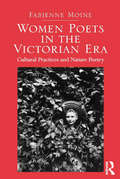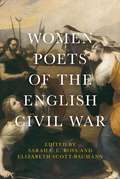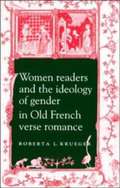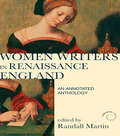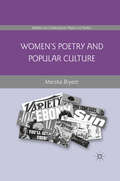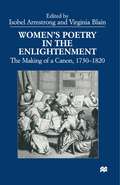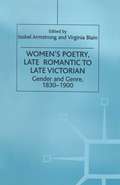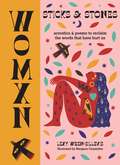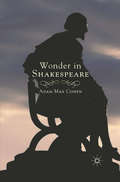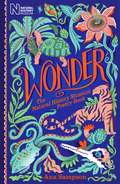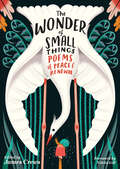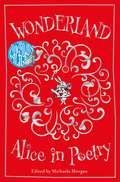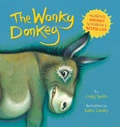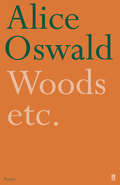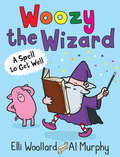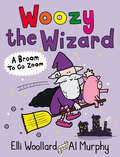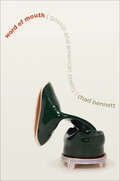- Table View
- List View
Women, Modernism and British Poetry, 1910–1939: Resisting Femininity
by Jane DowsonPrimarily a literary history, Women, Modernism and British Poetry, 1910-1939 provides a timely discussion of individual women poets who have become, or are becoming, well-known as their works are reprinted but about whom little has yet been written. This volume recognizes the contributions, overlooked previously, of such British poets as Anna Wickham, Nancy Cunard, Edith Sitwell, Mina Loy, Charlotte Mew, May Sinclair, Vita Sackville-West and Sylvia Townsend Warner; and the impact of such American poets as H.D., Amy Lowell, Edna St. Vincent Millay, Marianne Moore and Laura Riding on literary practice in Britain. This book primarily maps the poetry scene in Britain but identifies the significance of the network of writers between London, New York and Paris. It assesses women's participation in the diversity of modernist developments which include avant-garde experiments, quiet, but subtly challenging, formalism and assertive 'new woman' voices. It not only chronicles women's poetry but also their publications and involvement in running presses, bookshops and writing criticism. Although historically situated, it is written from the perspective of contemporary debates concerning the interface of gender and modernism. The author argues that a cohering aesthetic of the poetry is a denial of femininity through various evasions of gendered identity such as masking, male and female impersonations and the rupturing of realist modes.
Women, Modernism and British Poetry, 1910–1939: Resisting Femininity
by Jane DowsonPrimarily a literary history, Women, Modernism and British Poetry, 1910-1939 provides a timely discussion of individual women poets who have become, or are becoming, well-known as their works are reprinted but about whom little has yet been written. This volume recognizes the contributions, overlooked previously, of such British poets as Anna Wickham, Nancy Cunard, Edith Sitwell, Mina Loy, Charlotte Mew, May Sinclair, Vita Sackville-West and Sylvia Townsend Warner; and the impact of such American poets as H.D., Amy Lowell, Edna St. Vincent Millay, Marianne Moore and Laura Riding on literary practice in Britain. This book primarily maps the poetry scene in Britain but identifies the significance of the network of writers between London, New York and Paris. It assesses women's participation in the diversity of modernist developments which include avant-garde experiments, quiet, but subtly challenging, formalism and assertive 'new woman' voices. It not only chronicles women's poetry but also their publications and involvement in running presses, bookshops and writing criticism. Although historically situated, it is written from the perspective of contemporary debates concerning the interface of gender and modernism. The author argues that a cohering aesthetic of the poetry is a denial of femininity through various evasions of gendered identity such as masking, male and female impersonations and the rupturing of realist modes.
Women Poets in the Victorian Era: Cultural Practices and Nature Poetry
by Fabienne MoineExamining the place of nature in Victorian women's poetry, Fabienne Moine explores the work of canonical and long-neglected women poets to show the myriad connections between women and nature during the period. At the same time, she challenges essentialist discourses that assume innate affinities between women and the natural world. Rather, Moine shows, Victorian women poets mobilised these alliances to defend common interests and express their engagement with social issues. While well-known poets such as Elizabeth Barrett Browning and Christina Rossetti are well-represented in Moine's study, she pays particular attention to lesser known writers such as Mary Howitt or Eliza Cook who were popular during their lifetimes or Edith Nesbit, whose verse has received scant critical attention so far. She also brings to the fore the poetry of many non-professional poets. Looking to their immediate cultural environments for inspiration, these women reconstructed the natural world in poems that raise questions about the validity and the scope of representations of nature, ultimately questioning or undermining social practices that mould and often fossilise cultural identities.
Women Poets in the Victorian Era: Cultural Practices and Nature Poetry
by Fabienne MoineExamining the place of nature in Victorian women's poetry, Fabienne Moine explores the work of canonical and long-neglected women poets to show the myriad connections between women and nature during the period. At the same time, she challenges essentialist discourses that assume innate affinities between women and the natural world. Rather, Moine shows, Victorian women poets mobilised these alliances to defend common interests and express their engagement with social issues. While well-known poets such as Elizabeth Barrett Browning and Christina Rossetti are well-represented in Moine's study, she pays particular attention to lesser known writers such as Mary Howitt or Eliza Cook who were popular during their lifetimes or Edith Nesbit, whose verse has received scant critical attention so far. She also brings to the fore the poetry of many non-professional poets. Looking to their immediate cultural environments for inspiration, these women reconstructed the natural world in poems that raise questions about the validity and the scope of representations of nature, ultimately questioning or undermining social practices that mould and often fossilise cultural identities.
Women poets of the English Civil War (Current Practices in Ophthalmology)
by Sarah C. RossFeaturing modernised spelling and detailed explanatory notes, this anthology of Civil War-era women poets is perfect for students of English literature and early modern studies.
Women poets of the English Civil War (G - Reference, Information And Interdisciplinary Subjects Ser.)
by Sarah C. RossFeaturing modernised spelling and detailed explanatory notes, this anthology of Civil War-era women poets is perfect for students of English literature and early modern studies.
Women Readers and the Ideology of Gender in Old French Verse Romance (PDF)
by Roberta L. KruegerThis book studies the relationship between Old French verse romance and the women who formed a part of its reading and listening audience. The author challenges the notion that courtly literature promoted the social welfare of the noblewomen to whom romances were dedicated or addressed. She shows how many romances effected a sophisticated mystification of medieval women's loss of autonomy in the family and society during the twelfth and thirteenth centuries. At the same time, however, Krueger argues that many romances also portrayed the tensions inherent in courtly gender ideology in a way that invited the reader's critique or resistance. Taking as its point of departure the problematic inscription of women as readers within selected individual romances and drawing upon feminist and reader-response theory as well as recent historical studies, Krueger provides close readings of well-known and lesser-known texts from Chretien de Troyes' Yvain to J akemes' Le Roman du Castelain de Couci et de la dame de Faye!. Romances studied include misogynistic or "uncourtly" romances, romances that idealize the heroine, didactic romances, as well as romances that cast the woman reader as an object of desire. A final chapter on Christine de Pizan studies one historical woman's response to romance in the late Middle Ages. The representation of women readers in romance suggests that women's reception of gender ideology was conflicted. If some historical women were complicitous with courtly values, others may have questioned or even resisted traditional gender roles. The intriguing inscription of women as dedicatees, readers, listeners, and spectators catalyzed a critique of courtly ideology and opened a discursive space for the medieval audience's debate about gender issues as it continues to do for readers today.
Women Writers and Poetic Identity: Dorothy Wordsworth, Emily Bronte and Emily Dickinson
by Margaret HomansHow does the consciousness of being a woman affect the workings of the poetic imagination? With this question Margaret Homans introduces her study of three nineteenth-century women poets and their response to a literary tradition that defines the poet as male. Her answer suggests why there were so few great women poets in an age when most of the great novelists were women.Originally published in 1981.The Princeton Legacy Library uses the latest print-on-demand technology to again make available previously out-of-print books from the distinguished backlist of Princeton University Press. These editions preserve the original texts of these important books while presenting them in durable paperback and hardcover editions. The goal of the Princeton Legacy Library is to vastly increase access to the rich scholarly heritage found in the thousands of books published by Princeton University Press since its founding in 1905.
Women Writers in Renaissance England: An Annotated Anthology
by Randall MartinOf all the new developments in literary theory, feminism has proved to be the most widely influential, leading to an expansion of the traditional English canon in all periods of study. This book aims to make the work of Renaissance women writers in English better known to general and academic readers so as to strengthen the case for their future inclusion in the Renaissance literary canon. This lively book surveys women writers in the sixteenth century and early seventeenth centuries. Its selection is vast, historically representative, and original, taking examples from twenty different, relatively unknown authors in all genres of writing, including poetry, fiction, religious works, letters and journals, translation, and books on childcare. It establishes new contexts for the debate about women as writers within the period and suggests potential intertextual connections with works by well-known male authors of the same time. Individual authors and works are given concise introductions, with both modern and historical critical analysis, setting them in a theoretical and historicised context. All texts are made readily accessible through modern spelling and punctuation, on-the-page annotation and headnotes. The substantial, up-to-date bibliography provides a source for further study and research.
Women Writers in Renaissance England: An Annotated Anthology
by Randall MartinOf all the new developments in literary theory, feminism has proved to be the most widely influential, leading to an expansion of the traditional English canon in all periods of study. This book aims to make the work of Renaissance women writers in English better known to general and academic readers so as to strengthen the case for their future inclusion in the Renaissance literary canon. This lively book surveys women writers in the sixteenth century and early seventeenth centuries. Its selection is vast, historically representative, and original, taking examples from twenty different, relatively unknown authors in all genres of writing, including poetry, fiction, religious works, letters and journals, translation, and books on childcare. It establishes new contexts for the debate about women as writers within the period and suggests potential intertextual connections with works by well-known male authors of the same time. Individual authors and works are given concise introductions, with both modern and historical critical analysis, setting them in a theoretical and historicised context. All texts are made readily accessible through modern spelling and punctuation, on-the-page annotation and headnotes. The substantial, up-to-date bibliography provides a source for further study and research.
Women’s Experimental Poetry in Britain 1970–2010: Body, Time and Locale (Poetry And ... Ser.)
by David Kennedy Christine KennedyWomen’s Experimental Poetry in Britain 1970–2010: Body, Time and Locale presents the history and current state of a critically neglected, significant body of contemporary writing and places it within the wider social and political contexts of the period. Ranging from Geraldine Monk’s ventriloquizing of the Pendle witches to Denise Riley’s fiercely self-critical lyric poems, from the multi-media experiments of Maggie O’Sullivan to the globally aware, politicised sequences of Andrea Brady and Jennifer Cooke, David Kennedy and Christine Kennedy theorise women’s alternative poetries in terms of Julia Kristeva’s idea of ‘women’s time’ and in terms of the female poetic voice constantly negotiating with dominant systems of representation. They also offer a much-needed re-theorising of the value of avant garde practices.
Women's Poetry and Popular Culture (Modern and Contemporary Poetry and Poetics)
by Marsha BryantBridging feminist and cultural studies, the book shows how British and American women poets often operate as cultural insiders. Individual chapters reassess major figures (H.D., Gwendolyn Brooks, Sylvia Plath), alternative modernist poets (Edith Sitwell, Stevie Smith), and contemporary poets (Ai, Carol Ann Duffy).
Women’s Poetry in the Enlightenment: The Making of a Canon, 1730–1820
by Isobel Armstrong Virginia BlainThis collection of twelve critical essays on women's poetry of the eighteenth century and enlightenment is the first to range widely over individual poets and to undertake a comprehensive exploration of their work. Experiment with genre and form, the poetics of the body, the politics of gender, revolutionary critique, and patronage, are themes of the collection, which includes discussions of the distinctive projects of Mary Leapor, Ann Yearsley, Helen Maria Williams, Joanna Baillie, Charlotte Smith, Anna Barbauld and Lucy Aikin.
Women’s Poetry, Late Romantic to Late Victorian: Gender and Genre, 1830–1900
by I. Armstrong V. BlainThe first collection to make a comprehensive study of nineteenth-century women's poetry from late Romantic to late Victorian 'new woman' writers. Eighteen essays consider the gendered codes and genres developed by sophisticated poets. The feminine subject and marketing, a woman's tradition, lesbian desire, war, race, colonial experience, religion and science are themes of the collection, featuring, as well as the familiar Christina Rossetti and Elizabeth Barrett Browning, other poets such as 'L.E.L.', Felicia Hemans, Amy Levy and Augusta Webster.
WOMXN: Acrostics and Poems to Reclaim the Words that Have Hurt Us
by Lexy Wren-Sillevis"There are so many words, insults, labels and boxes for women to be packaged and packed off in. Often, but not always, they're words coined by men. Why that is, is a bigger conversation that is starting to be had by women everywhere. We're slowly, but oh-so-surely, making it clear that there is no man in womxn. We're writing him out and writing us back in, and we deserve a suffix all of our own that is free from patriarchal roots. So from here on in, we are WOMXN."Sticks and Stones is a powerful reclamation of the slurs and insults thrown at women for centuries. It's a righting of wrongs - a rewriting of sexist, belittling and shaming language. It's a tool for breaking free from the stereotypes and impossible standards used to confine women, transforming them into messages of resilience and resolve. And, most importantly, it's a rallying call for change, healing and empowerment.It takes the words, slurs, insults and labels that are used to diminish women every day and breaks them down and tears them apart. It transmutes and rewrites these words - sometimes with all of the pain they trigger, sometimes in the form of positive affirmations, mantras and poems - all told in acrostics.With their underlying meditative rhythms, these acrostics are also a remedy for healing wounds and empowering women to have the confidence to be their true selves. You can dip in and out, or read it cover to cover. You can come back to, and work through, any words that resonate with you. Lexy also offers clearing meditations at the back of the book to help you tackle the words that hurt you most, helping to remove them from your past, present and future.This title is illustrated by the hugely talented illustrator and print maker Margaux Carpentier. Margaux creates pictures using a symbolic language, so each piece has its own unique message for every individual. Her work is inspired by all the incredible colours of the world. She adapts her illustrations in 3D and large-scale murals, the most recent of which is currently on display in Brown Hart Gardens in Mayfair, London.
Wonder in Shakespeare
by A. CohenIn the first part of this book, Adam Max Cohen embraces the many meanings of wonder in order to challenge the generic divides between comedy, tragedy, history, and romance and suggests that Shakespeare's primary goal in crafting each of his playworlds was the evocation of one or more varieties of wonder.
Wonder: The Natural History Museum Poetry Book
by Ana SampsonWonder: The Natural History Museum Poetry Book is a beautiful gift hardback collection of poetry with poems inspired by The Natural History Museum. It covers everything from the depths of space to the very centre of the earth - there are poems about the solar system, planet earth, oceans and rivers, birds, dinosaurs, fossils, wildlife, flowers, fungi, insects, explorers and palaeontologists. Each section includes an introduction and some footnotes about particularly interesting species. The museum has a collection of over eighty million objects and behind the scenes of its twenty-eight galleries crowd kilometres of preserved specimens, libraries of rare books and artworks, wonders gathered on some of the most famous voyages in history, rooms packed with pressed plants, warehouses teeming with stuffed animals and freezers full of DNA. As well as a museum, it is a state-of-the-art centre for discovery with over three hundred resident scientists and over ten thousand visiting researchers each year, investigating everything from dinosaurs to life on other planets.The collection is made up of brand new and classic poems and is illustrated with botanical drawings and engravings from the museum’s collections.This fantastic collection speaks of the wonder of nature and shows us why we need to look after our incredible planet.
The Wonder of Small Things: Poems of Peace and Renewal
by James CrewsThe editor of the bestselling poetry anthologies How to Love the World and The Path to Kindness presents a collection of highly accessible, uplifting poetry celebrating the small wonders and peaceful moments of everyday life. James Crews, editor of two best-selling poetry anthologies, How to Love the World and The Path to Kindness, presents an all-new collection of highly accessible poems on the theme of celebrating moments of wonder and peace in everyday life. As Crews writes in the introduction: "[A] deep love for the world is present in every one of the poems gathered in this book. Wonder calls us back to the curiosity we are each born with, and it makes us want to move closer to what sparks our attention. Wonder opens our senses and helps us stay in touch with a humbling sense of our own human smallness in the face of unexpected beauty and the delicious mysteries of life on this planet." The anthology features a foreword by Nikita Gill and a carefully curated selection of poems from a diverse range of authors, including Native American poets Joy Harjo, Linda Hogan, Kimberly Blaeser, and Joseph Bruchac, and BIPOC writers Ross Gay, Julia Alvarez, and Toi Derricotte. Crews features new poems from popular writers such as Natalie Goldberg, Mark Nepo, Ted Kooser, Naomi Shihab Nye, Jane Hirshfield, and Jacqueline Suskin, along with selections from emerging poets. Readers are guided in exploring the meaning and essence of the poems through a series of reflective pauses scattered through the pages and reading group questions in the back. This anthology offers the perfect intersection for the growing number of readers interested in mindful living and bringing poetry into their everyday lives.
Wonderland: Alice in Poetry
by Michaela MorganLewis Carroll's Alice has been enchanting children for 150 years. Curious Alice, the bossy White Rabbit, the formidable Queen of Hearts and the Mad Hatter are among the best-loved, most iconic literary creations of all time.In Wonderland: Alice in Poetry, we celebrate the poems of Lewis Carroll, from the sublime to the surreal, including popular favourites such as Jabberwocky , The Walrus and the Carpenter and Tweedledum and Tweedledee. In addition to these classic, beloved poems, this beautiful collection features many contemporary poems from editor Michaela Morgan and a host of popular poets, including Roger McGough, John Agard, Grace Nichols, Rachel Rooney, Tony Mitton, Vivian French, Cheryl Moskowitz, Joseph Coehlo, and Jan Dean, each one putting their own spin on these classic texts.
The Wonky Donkey
by Craig Smith Katz CowleyThe book behind the viral internet sensation of a granny reading this story to her grandchild, viewed over 3 million times. Based on the popular song, THE WONKY DONKEY has sold over one million copies worldwide, and is now available as an e-book! Who ever heard of a spunky hanky-panky cranky stinky-dinky lanky honky-tonky winky wonky donkey? This hilarious picture book will have children - and adults - braying with laughter!
Woods etc.
by Alice OswaldWoods etc. is Alice Oswald's third collection of poems, and follows the success of her widely acclaimed river-poem Dart, which was awarded the T. S. Eliot Prize in 2002. Extending the concerns of Dart and written over a period of several years, these poems combine abrupt honesty with an exuberant rhetorical confidence, at times recalling the oral and anonymous tradition with which they share such affinity.
Woozy the Wizard: A Spell to Get Well (Woozy the Wizard #1)
by Elli Woollard'In the faraway village of Snottington SneezeLived a wizened old wizard with knocketty knees.'Woozy the Wizard is a well-meaning wizard who just wants to help his friends. But sometimes his spells (and he) get all mixed up! So then he has to get back on his broom with his pet pig and zoom around the village trying to put things right . . . 'Your spells sometimes flop but you see, we don't mind;We love you, dear wizard, because you are kind.'
Woozy the Wizard: A Broom to Go Zoom (Woozy the Wizard #2)
by Elli WoollardFriendship and fun abound in this full-colour early reader for ages 4+.In the faraway village of Snottington SneezeLived a wizened old wizard with knocketty knees.Woozy the Wizard loves his old broom - not too small, not too big - but it is a little rusty. So when he spies a Shiny New Shop with HOOVERS he can't believe his luck! If only he could make his new hoover go zoom . . . Magic and mishap ensue with Woozy and his pet pig.The second in a brilliant new series featuring charming rhyming text and lovely illustrations, with clear shapes and colours, this is a joy to read aloud, and just right for children moving from large-format picture books to young readers.
Word of Mouth: Gossip and American Poetry (Hopkins Studies in Modernism)
by Chad BennettCan the art of gossip help us to better understand modern and contemporary poetry? Gossip;€™s ostensible frivolity may seem at odds with common conceptions of poetry as serious, solitary expression. But in Word of Mouth, Chad Bennett explores the dynamic relationship between gossip and American poetry, uncovering the unexpected ways that the history of the modern lyric intertwines with histories of sexuality in the twentieth century. Through nuanced readings of Gertrude Stein, Langston Hughes, Frank O;€™Hara, and James Merrill;¢;‚¬;€?poets who famously absorbed and adapted the loose talk that swirled about them and their work;¢;‚¬;€?Bennett demonstrates how gossip became a vehicle for alternative modes of poetic practice. By attending to gossip;€™s key role in modern and contemporary poetry, he recognizes the unpredictable ways that conventional understandings of the modern lyric poem have been shaped by, and afforded a uniquely suitable space for, the expression of queer sensibilities.Evincing an ear for good gossip, Bennett presents new and illuminating queer contexts for the influential poetry of these four culturally diverse poets. Word of Mouth establishes poetry as a neglected archive for our thinking about gossip and contributes a crucial queer perspective to current lyric studies and its renewed scholarly debate over the status and uses of the lyric genre.
Word of Mouth: Gossip and American Poetry (Hopkins Studies in Modernism)
by Chad BennettCan the art of gossip help us to better understand modern and contemporary poetry? Gossip;€™s ostensible frivolity may seem at odds with common conceptions of poetry as serious, solitary expression. But in Word of Mouth, Chad Bennett explores the dynamic relationship between gossip and American poetry, uncovering the unexpected ways that the history of the modern lyric intertwines with histories of sexuality in the twentieth century. Through nuanced readings of Gertrude Stein, Langston Hughes, Frank O;€™Hara, and James Merrill;¢;‚¬;€?poets who famously absorbed and adapted the loose talk that swirled about them and their work;¢;‚¬;€?Bennett demonstrates how gossip became a vehicle for alternative modes of poetic practice. By attending to gossip;€™s key role in modern and contemporary poetry, he recognizes the unpredictable ways that conventional understandings of the modern lyric poem have been shaped by, and afforded a uniquely suitable space for, the expression of queer sensibilities.Evincing an ear for good gossip, Bennett presents new and illuminating queer contexts for the influential poetry of these four culturally diverse poets. Word of Mouth establishes poetry as a neglected archive for our thinking about gossip and contributes a crucial queer perspective to current lyric studies and its renewed scholarly debate over the status and uses of the lyric genre.

